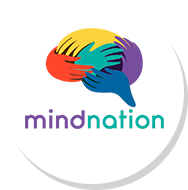A whopping 97 percent of millennial employees consider development in a job important, according to a survey by analytics and advisory company Gallup. The report further states that millennials are the generation most likely to switch jobs and be on the lookout for new opportunities because “they want more out of life, and they believe they can get it.”
Business leaders should therefore give importance to an employee’s career advancement. If they don’t, they risk undermining morale and productivity by leaving talented workers feeling like they aren’t valued.
“The most important part of a company is its people,” says James Michael “Jim” Lafferty, CEO of Fine Hygienic Holdings, a wellness company with headquarters in Dubai that makes personal care and hygienic products. “And if you value your people, you should care about how they are developing in their career and in everything else that comes with it.”
Apart from being a multi-awarded business leader, Jim is also a mentor and coach to national and Olympic-level athletes. “One of our key roles as leaders is to nurture the next generation of talent,” he wrote in his blog. “It means pushing them….Believing in them. Stretching them.”
“One of our key roles as leaders is to nurture the next generation of talent.”
James Michael “Jim” Lafferty, CEO of Fine Hygienic Holdings
Here are some strategies you can use to promote the development of your employees:
- Take an interest in your employee’s career goals
Communicate frequently with your team so that you stay attuned to their career aspirations and expectations. Then help them outline a potential career path within the company so they can better visualize their future. Clear, direct, and consistent communication from you about career advancement steps can help workers feel more engaged.
- Promote trainings and skills development courses
There are many virtual learning opportunities available now, so encourage your team to pursue relevant business courses and workshops that will further their career advancement. If you cannot pay for the entire course fee, at least subsidize it — investing in employee career development can deliver a strong ROI for your business.
Another option is to conduct an in-house training program, where you or your executives can conduct virtual sessions touching on your various expertise.
Lastly, look for companies that hold self-improvement webinars that anyone in the team can benefit from, whether they are seasoned executives or new hires. MindNation offers Company Culture Drive talks, which are interactive virtual trainings that cover topics ranging from Beating Burnout to Managing Difficult Conversations.

- Do not sugarcoat feedback.
“This is the biggest issue in managing people; it’s hard to sit down and tell people ‘You’re not up to your potential,’ ‘You can be so great but you don’t just apply yourself,’ or ‘You need to work on XYZ,’” Jim points out. “But people need different things at different points in their life — sometimes it’s a pat on the back, other times it’s straight feedback. The latter may not always be what they want, but it’s what they need to become better.”
- Support work-life balance.
Encourage your employees to work smart, maximize their efficiency, and leave time and energy for their non-work interests. Taking care of your team’s well-being can also prevent stress from rising and leading to burnout. By adopting policies that enhance work-life balance, you can help your workers find the time to do their jobs, attend to personal demands, and even engage in professional and personal development activities that can help them become the best version of themselves.
“Developing people is at the foundation of great leaders,” Jim wrote. “Building up the skills and capabilities of one’s team is the only sure way to sustainable success in business.”
MindNation’s well-being program is based on a person’s holistic wellness — not only can we help you build teams that are physically, mentally, and emotionally well, we also help them discover their passion and purpose in life so that they become happier, healthier, and more productive. Visit http://www.mindnation.com to know more about our services.










